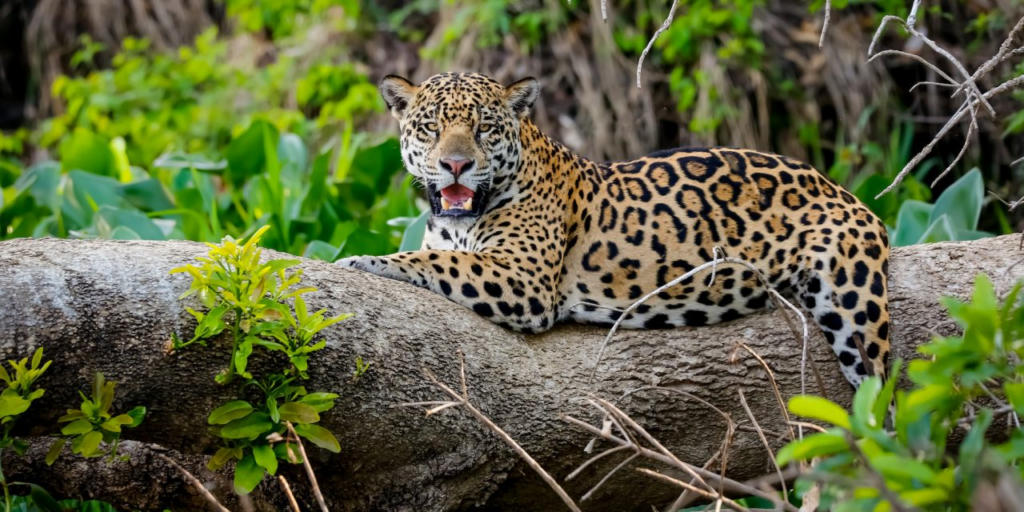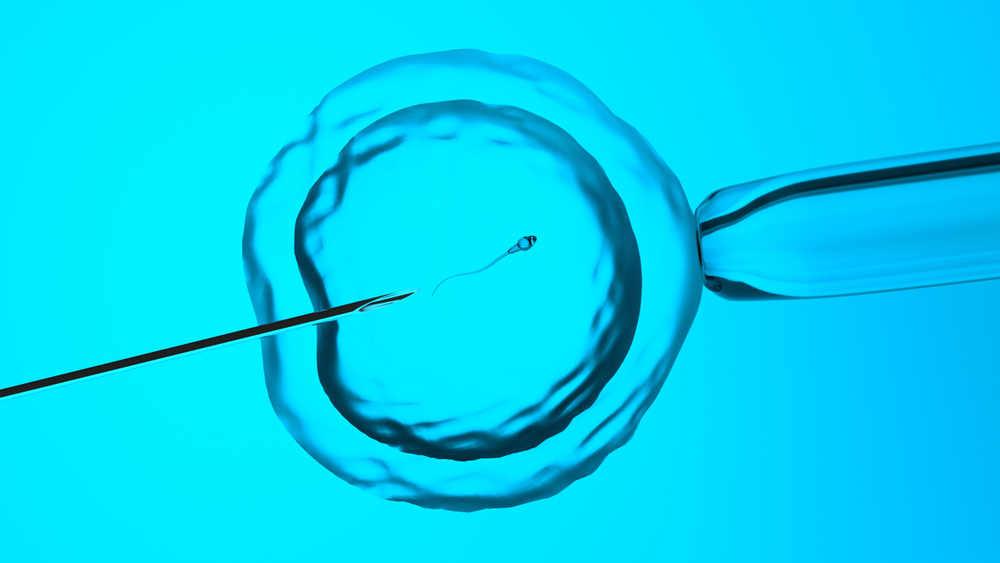Jaguars, the iconic big cats of the Americas, are facing a critical threat. As their numbers dwindle due to habitat loss and poaching, conservationists are racing against time to save them. One groundbreaking effort involves the use of artificial insemination (AI), a technique that has shown promise in preserving other endangered species. But the journey to save jaguars is fraught with challenges, as evidenced by the bittersweet story of Bianca, a jaguar mother involved in a pioneering AI experiment. This tale of scientific triumph and tragedy underscores the complexity and urgency of wildlife conservation efforts.
The Decline of Jaguar Populations

Jaguars, the third-largest cats in the world, once roamed freely from Mexico to Argentina. Unfortunately, their numbers have been steadily declining, pushing them toward the brink of endangerment. The main reasons behind this troubling trend are habitat loss and poaching.
As human activities encroach on their natural habitats, jaguars are left with fewer places to live and hunt. Forests and savannahs are being converted into farmland and urban areas, fragmenting the jaguars’ territories and isolating their populations. This habitat fragmentation forces these majestic cats into smaller, more confined spaces, making it difficult for them to find food, mates, and safe places to raise their young.
Poaching is another significant threat to jaguars. Despite legal protections, these animals are often hunted for their striking pelts and other body parts. The illegal wildlife trade continues to thrive, driven by high demand and lucrative black market prices. As a result, jaguar populations are not only shrinking but also becoming more genetically homogenous, which can lead to health issues and lower reproductive success.
The situation is particularly dire in regions like the Amazon rainforest, where deforestation and wildfires have destroyed vast areas of jaguar habitat. These environmental disasters displace or kill many jaguars, further reducing their already dwindling numbers. In addition, the loss of jaguars has broader ecological implications. As apex predators, jaguars play a crucial role in maintaining the balance of their ecosystems by controlling the populations of other species. Without jaguars, these ecosystems could become unbalanced, leading to a cascade of negative effects on other wildlife and plant species.
Recognizing the urgent need to protect jaguars, conservationists and researchers are exploring innovative methods to help boost their populations. One of the most promising techniques is artificial insemination (AI), which offers a glimmer of hope for the future of these magnificent cats.
Bianca’s Role in a Conservation Breakthrough

In an effort to turn the tide for jaguars, scientists have embraced a groundbreaking method: artificial insemination (AI). This technique, which has been successful in preserving other endangered species, offers new hope for these iconic cats.
One of the key figures in this effort is Bianca, a wild-born jaguar living in Brazil. In November 2018, Bianca became part of a pioneering AI experiment conducted by the experts at the Conservation and Research of Endangered Wildlife (CREW). Using a technique known as AI Embryo Transfer, scientists inseminated Bianca with the goal of producing a healthy jaguar cub.
The process itself is quite fascinating. It involves collecting semen from a male jaguar and then carefully inseminating a female. For Bianca, the procedure was a success. In February 2019, she gave birth to a healthy cub at Brazil’s environmental organization Mata Ciliar. This event marked a significant milestone in the use of AI for jaguar conservation.
However, the journey wasn’t without its challenges. Just two days after the cub’s birth, it vanished from the maternity den. Researchers believe that Bianca, being a first-time mother, may have eaten her cub – a behavior known as filial cannibalism, which is not uncommon among carnivores. While this outcome was heartbreaking, the successful birth itself was a major scientific achievement.
The Bittersweet Success

Dr. Lindsey Vansandt, the lead scientist on the project, explained that while the loss was heartbreaking, it didn’t overshadow the scientific success of the AI procedure. “From a scientific perspective, we’re celebrating the fact that the cub was born healthy and that the AI was a success,” she said. “It’s disappointing that the cub did not survive longer, but it’s not uncommon for carnivores, especially first-time mothers, to behave this way with their offspring.”
This bittersweet outcome highlighted the complexities of wildlife conservation. On one hand, the birth of the cub marked a significant step forward in using assisted reproduction techniques to save endangered species. On the other hand, it underscored the need for continued research and refinement to address the challenges that come with these innovative methods.
Despite the tragic end for Bianca’s cub, the experience provided valuable insights for the scientific community. It confirmed that AI could be used successfully in jaguars and set the stage for future efforts to improve the technique. The goal remains clear: to boost jaguar populations and ensure the survival of these magnificent cats for generations to come.
Understanding Filial Cannibalism
Filial cannibalism, the act of a parent consuming its offspring, might seem shocking, but it’s a behavior observed in many carnivorous species. Understanding this phenomenon is crucial for comprehending what might have happened to Bianca’s cub.
Dr. Lindsey Vansandt, a theriogenologist and lead scientist on the project, explained that filial cannibalism is not uncommon among first-time mothers in the animal kingdom. This behavior can be triggered by various factors, including stress, inexperience, or the instinctual recognition of a cub’s weakness or health issues. In the wild, a mother may eat her young to conserve resources, prevent the spread of disease, or eliminate a cub that she senses will not survive.
In Bianca’s case, as a first-time mother, her inexperience might have played a significant role. The environment and conditions in captivity can also add stress, influencing her behavior. Despite the unfortunate outcome, these instances provide valuable insights into the natural instincts and behaviors of jaguars, guiding researchers in refining their approaches to conservation.
Understanding filial cannibalism helps scientists create better management strategies for captive breeding programs. It emphasizes the importance of providing optimal conditions for the animals and monitoring their behaviors closely to mitigate stress and improve the chances of offspring survival.
Continuing the Effort – Repeating the Experiment
Despite the initial setback with Bianca’s first cub, scientists were determined to continue their efforts. In 2021, researchers from Brazil and the United States decided to repeat the artificial insemination (AI) experiment with Bianca and another female jaguar named Tabatinga. Their goal was to refine the AI technique and increase the chances of raising healthy cubs.
Bianca, now living in a protected area in São Paulo state, Brazil, was once again at the center of these efforts. By this time, she was eight years old and had become a symbol of hope for jaguar conservation. The researchers used fresh semen from a resident wild-born male to perform the AI procedure, hoping to replicate and improve upon their earlier success.
The process involved careful planning and execution. Dr. Lindsey Vansandt, the lead scientist on the project, explained the importance of genetic diversity in maintaining healthy populations. “The population sort of becomes smaller and smaller, and then you get inbreeding which has lots of bad consequences,” she said. “If we can take sperm from one male and inseminate a female from another location, we can keep their gene flow moving and keep the population more healthy.”
While the results of this second attempt have not been fully disclosed, the continued use of AI in jaguar conservation reflects the dedication of the scientific community. Each experiment, regardless of the immediate outcome, provides valuable data that helps researchers understand the reproductive biology of jaguars and refine their techniques.
The Role of Artificial Insemination in Conservation
The story of Bianca and the use of artificial insemination (AI) in jaguar conservation highlights the broader potential of assisted reproductive technologies to save various endangered species. By successfully applying AI, scientists can increase genetic diversity, boost populations, and ultimately prevent extinction. AI allows for the introduction of genetic material from different locations without transporting animals, thereby reducing the risks associated with inbreeding. This technique is crucial for maintaining healthy populations, especially in species with dwindling numbers.
Additionally, AI and other techniques like in vitro fertilization (IVF) offer hope for species that are difficult to breed in captivity. These technologies can preserve genetic material for future use through semen cryopreservation, ensuring genetic diversity even if some animals do not survive or reproduce. The advancements seen in Bianca’s story underscore the importance of innovative, science-based approaches in tackling the challenges faced by endangered species. As researchers continue to refine these techniques, they hope to apply them to a wider range of animals, helping to secure the future of our planet’s biodiversity.
Reflecting on Conservation Efforts
The journey of Bianca and her cub, despite its bittersweet end, underscores the critical role of artificial insemination in jaguar conservation. The birth of the cub marked a significant milestone, demonstrating the potential of advanced reproductive technologies to support population growth and genetic diversity. This case also highlighted the complexities of maternal behavior and the need for optimal care conditions.
Supporting wildlife conservation is a collective effort. By contributing to conservation organizations, promoting habitat protection, advocating against poaching, educating others, and participating in citizen science projects, we can all play a part in protecting endangered species. Every action, no matter how small, contributes to a larger impact, ensuring the survival of magnificent creatures like jaguars.
Looking to the future, the lessons learned and advancements in conservation technologies provide hope. With continued dedication and collaboration, we can create a world where jaguars and other endangered species thrive, preserving the rich biodiversity essential for the health of our planet.



